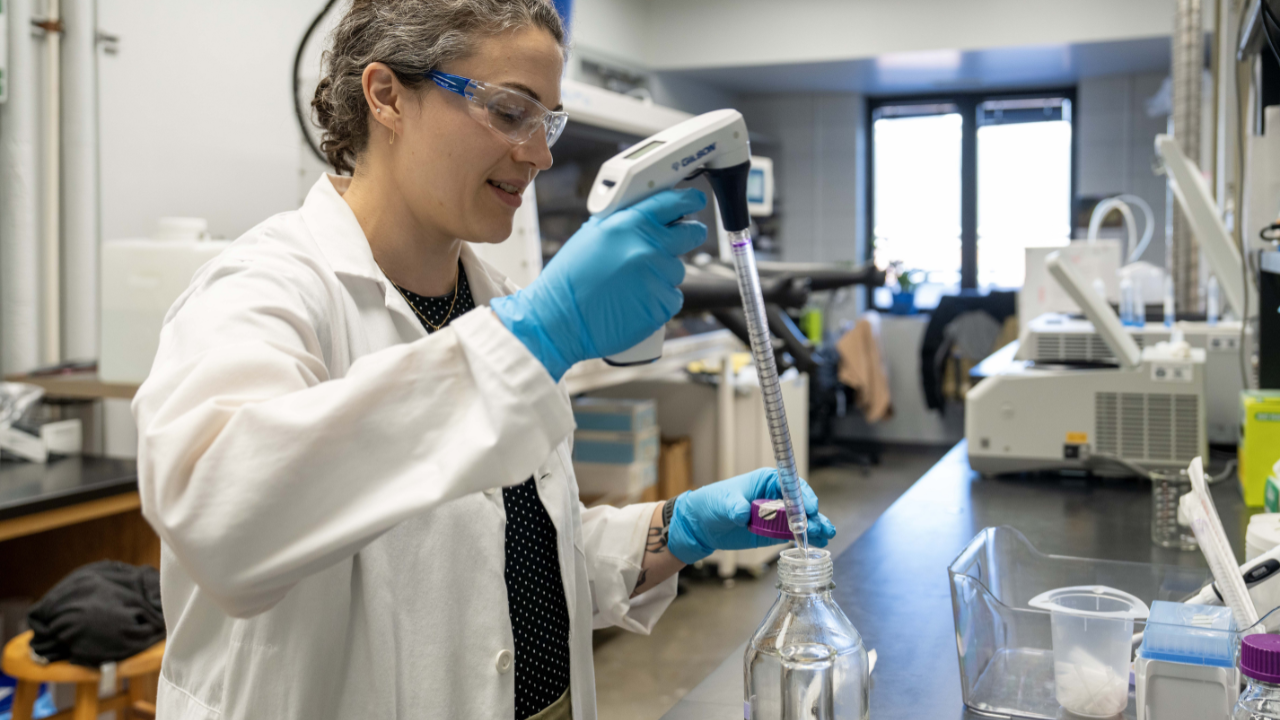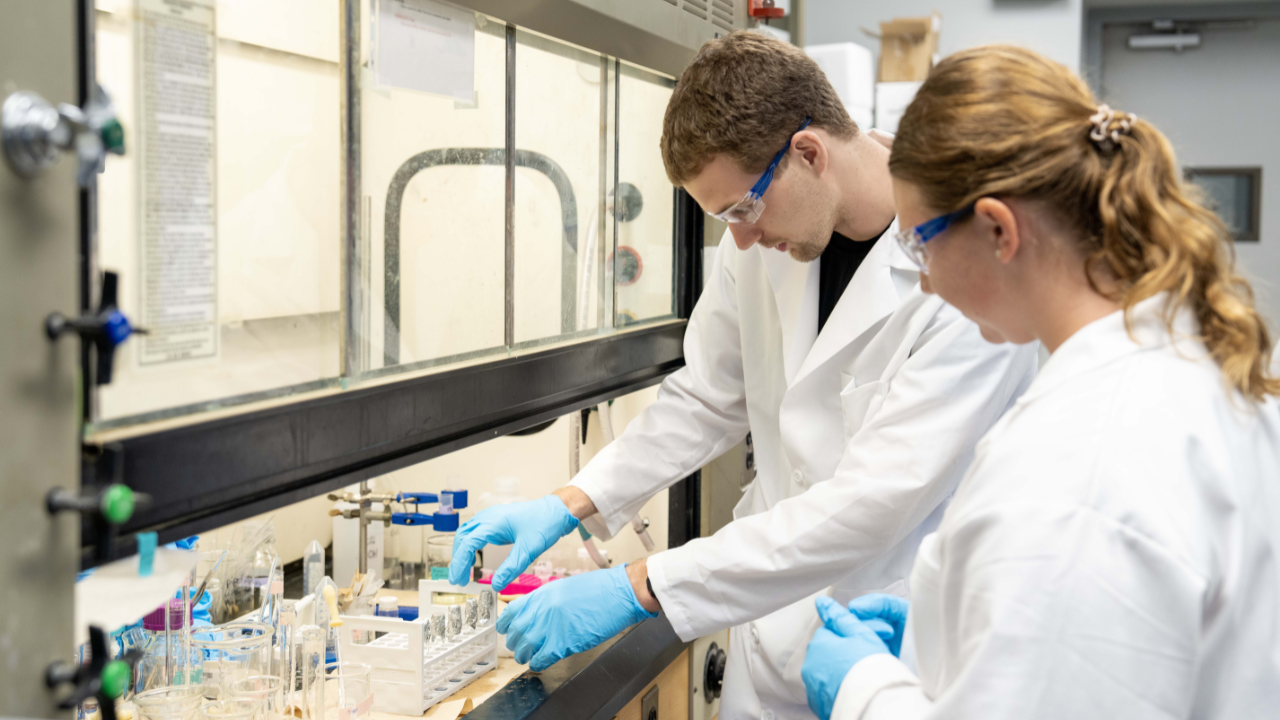content body

Assistant professor Katie Rush of Auburn University’s Department of Chemistry and Biochemistry recently received national recognition for her research on trace elements in proteins.
You can’t see selenium at work in the body, but Katie Rush has found a way to watch the trace element. She and her students rely on synchrotron light sources at national labs — powerful X-Ray machines that act like giant microscopes — to reveal the hidden world of proteins.
In Auburn’s College of Sciences and Mathematics (COSAM), Rush is an assistant professor who specializes in biochemistry and x-ray spectroscopy, a rare combination that allows her lab to isolate the roles of specific elements.
“We’re able to go to particle accelerator facilities to synchrotron light sources and study element specific processes in proteins,” Rush said. “We can look at only iron, only copper or only selenium and silence all other elements from our data.”
That capability is unusual in the field, and it means Rush and her students often leave their campus lab for some of the most advanced research facilities in the country. Her group regularly travels to the Stanford Linear Accelerator Center in California and Brookhaven National Laboratory in New York, where billion-dollar machines and teams of scientists converge to make big science possible.
“It’s an unusual training opportunity to do those hands-on experiments,” Rush said. “It’s exciting and a very different perspective than working in my four-person lab every day.”
Rush’s work recently earned national recognition through the Ralph E. Powe Junior Faculty Enhancement Award, a competitive honor reserved for early career faculty. The $10,000 award is dedicated to sending students to synchrotron facilities, where they learn by doing.
At those national labs, months of preparation lead up to just a few days of beam time, and every minute is precious. “Students will be able to train in the hands-on technique,” Rush said. “It’s intense. We work in shifts and take care of each other to make the most of every hour.”
Her current research focuses on proteins that contain selenium, an element that plays an outsized role in human health despite its rarity. One protein of interest helps regulate thyroid hormone balance, but little is known about how selenium drives that process. With element-specific techniques, Rush hopes to uncover those mechanisms.
Rush emphasized that the research is a team effort built on contributions from both graduate and undergraduate students. Experiments conducted by Eulalie de Souza, a former research technician now pursuing a PhD in California; PhD candidate Susan Short; PhD student Laura Hall; and COSAM undergraduates Kaitlyn Childress and Brody Church were included as preliminary data in the proposal that secured the award.
Doug Goodwin, chair of the Department of Chemistry and Biochemistry (DCB), said the honor reflects Rush’s impact.
“Junior faculty like Dr. Rush are the future of DCB, COSAM and Auburn University,” he said. “The national recognition represented by the Powe Award for Dr. Rush, her outstanding record, unique expertise and compelling research plans means that the outlook for research and instruction in biochemistry at Auburn University is very bright.”
Goodwin added that Rush’s rare expertise benefits not only her own students but the wider scientific community.
“She has the capability to provide unique insight into important biomedical processes like thyroid hormone homeostasis and biological processing of mercury,” he said. “Importantly, she is able to bring these same tools to bear on the research questions of other faculty.”
For Rush, the recognition is a sign her early work is on the right track.
“Your independent research program is very creative; it’s very individual,” she said. “For it to be recognized as meaningful and fundable is reassuring that we’re doing something people are paying attention to.”






